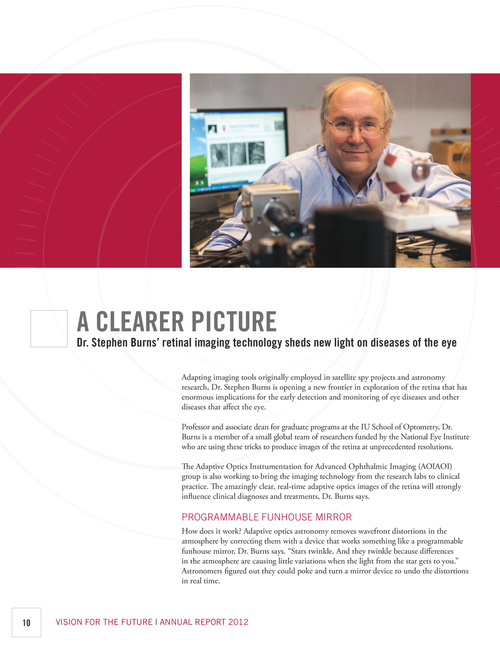
A CLEARER PICTURE
Dr. Stephen Burns’ retinal imaging technology sheds new light on diseases of the eye
Adapting imaging tools originally employed in satellite spy projects and astronomy research, Dr. Stephen Burns is opening a new frontier in exploration of the retina that has enormous implications for the early detection and monitoring of eye diseases and other diseases that affect the eye. Professor and associate dean for graduate programs at the IU School of Optometry, Dr. Burns is a member of a small global team of researchers funded by the National Eye Institute who are using these tricks to produce images of the retina at unprecedented resolutions. The Adaptive Optics Instrumentation for Advanced Ophthalmic Imaging (AOIAOI) group is also working to bring the imaging technology from the research labs to clinical practice. The amazingly clear, real-time adaptive optics images of the retina will strongly influence clinical diagnoses and treatments, Dr. Burns says.
PROGRAMMABLE FUNHOUSE MIRROR
How does it work? Adaptive optics astronomy removes wavefront distortions in the atmosphere by correcting them with a device that works something like a programmable funhouse mirror, Dr. Burns says. “Stars twinkle. And they twinkle because differences in the atmosphere are causing little variations when the light from the star gets to you.” Astronomers figured out they could poke and turn a mirror device to undo the distortions in real time.
10
VISION FOR THE FUTURE | ANNUAL REPORT 2012